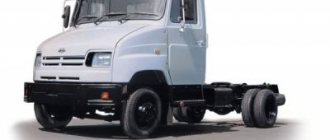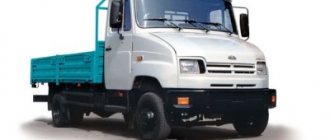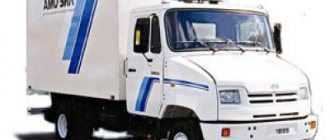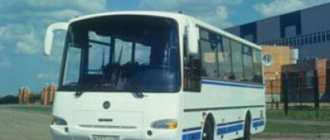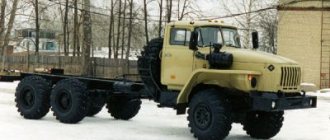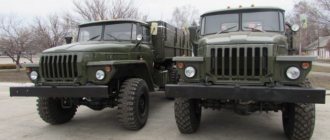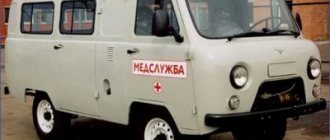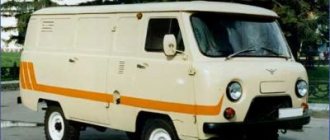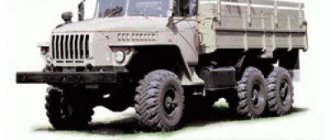ZIL "Bychok" is the car that gave rise to a whole family of modern trucks. This car became the “father” for ZIL-3250 buses - unusual and controversial vehicles, but certainly interesting. What these buses are, what their features, advantages and disadvantages are - read in this article.
ZIL-3250 is a small-capacity city bus, built according to the classic hood layout, and has a 4x2 wheel arrangement. It carries 22 passengers and can be used both in the city and for organizing suburban services.
History of ZIL-3250
The turn of the millennium became a turning point for the entire domestic automobile industry. At the end of the 90s of the last century, the crisis and lack of modern cars were acutely felt, and already at the beginning of the new century, many enterprises presented their new products. The designers of ZIL also worked well in this direction, back in 1997 they proposed the new ZIL-3250 bus, which began to be mass produced in 1999.
The ZIL-3250 is not original in everything, since it is built on the chassis of the ZIL-5301 “Bychok” light-duty truck that was already popular at that time. They simply installed a frame and body on the Bychka, did a few things to improve comfort - and the new bus was ready.
It is interesting that the peak of production of new buses occurred in 2000, and in all subsequent years the pace of its production has been steadily falling. Now the machine is still in production, but it is produced to order and literally one by one - no more than two dozen units per year. Moreover, some of the new ZIL-3250 buses are exported.
About the manufacturer, model in chronological order
The plant was founded in 1916, at different times the company bore several names, hence the differences in the markings of equipment models. The first bus rolled off the assembly line in 1926. The model was created on the chassis of a 1.5-ton AMO-F-15 truck. In the period from 1926 to 1932, several hundred buses were created on this chassis with different types of bodies. From 1934 to 1941 the plant produced the city ZiS-8 and its more advanced model ZiS-16.
Bus ZIL-158. Photo Wikipedia
After the war, the company produced the ZiS-154, which did not gain popularity due to an extensive list of shortcomings, and the ZiS-155. The most significant development of the plant is the intercity ZiS-127, produced from 1955 to 1961. Soon after the cessation of production of the 127th model, serial production of the ZIL-118 “Yunost” began, which continued until the 1990s. From 1997 to 2012, the plant produced the ZIL-3250 family of small class buses, which was the last for the enterprise.
Design Features
As already mentioned, the ZIL-3250 bus is based on the ZIL-5301 chassis. The bus body is made of stamped elements and mounted on a spatial frame, which ensures high rigidity and reliability of the entire structure. At the same time, there are two main modifications of the body: all-metal and with plastic elements (roof and a number of lower tier parts).
Special attention is paid to the interior of the bus. It is quite spacious and high (you can stand freely), it has individual or double seats, overhead luggage racks, window curtains, etc. For glazing, safety glasses are used, which in various modifications can be installed on a rubber seal or glued.
As for the frame, chassis, engine and other systems, the ZIL-3250 bus almost completely replicates the ZIL-5301, which has a positive effect on the maintenance and repair of the bus. The fact is that it’s quite easy to find ZIL spare parts for both cars, even though the only buses that are currently “on the road” are those manufactured in the early 2000s
Pre-war ZIS buses[ | ]
ZIS-8 bus on a USSR postage stamp, 1974
Based on the ZIS-5, or rather its lengthened base from 3.81 to 4.42 m, the ZIS-11 chassis in 1934-1936. A 22-seater (total number of seats 29) bus ZIS-8 was produced. Six-cylinder in-line carburetor engine with a volume of 5.55 liters and a power of 73 hp. With. allowed the ZIS-8 with a total weight of 6.1 tons to accelerate to 60 km/h. Only 547 units were produced at ZIS.
ZIS-8, but from the second half of 1936 the production of this model (despite the huge needs of the fast-growing cities of the USSR) was stopped due to the reconstruction of the plant and the transition to the more advanced ZIS-16 model. However, the production of the much-needed bus according to the ZIS drawings was continued by a number of car repair enterprises in the country, for example, it was produced in Moscow until 1940.
In addition, even before the war, a number of automobile repair enterprises produced small batches of open excursion buses based on the ZIS-8. In the Moscow bus fleet, the ZIS-8 (due to post-war overhauls) lasted until the early 50s. Production of the more advanced ZIS-16 bus, which, in accordance with the then automotive fashion, had a streamlined body shape, but was still built on a wooden frame, began in 1938 and continued until August 1941 (according to some sources, until the end of the 1940s, the bus also assembled from stock of spare parts).
The bus could accommodate up to 34 passengers (with 26 seats). Boosted to 84 hp. With. The ZIS-16 engine accelerated the vehicle with a total weight of 7.13 tons to 65 km/h. Since 1939, a limited series of the ZIS-16S ambulance bus was produced with a separate cabin from the ZIS-5, designed to transport 10 stretchers and 10 seated patients.
A total of 3,250 ZIS-16 buses were produced (excluding post-war vehicles). Some of them, not mobilized into the Red Army in the initial period of the war, were equipped in 1943 with gas generator and gas cylinder installations, dismantled in 1945. Thanks to the modern and recognizable appearance of the ZIS-16, it became a very characteristic feature of the street landscape of Moscow in the late 30s and early 50s.
Bus ZIS-16 on a USSR postage stamp, 1975
Power point
All serial modifications of the bus use engines from the Minsk Motor Plant (MMZ). These are turbocharged inline four-cylinder diesel engines. In total, at different times, three engines were installed on the ZIL-3250:
— D-245.12S (108 hp, Euro-1, installed on early modifications); — D-245.9E2 (136 hp, Euro-2, installed on modifications until 2008); — D-245.9E3 (136 hp, Euro-3, installed on modifications after 2008).
Also, several modifications of the ZIL-3250 in the “Lux” version, custom-made in limited quantities, were equipped with foreign engines from Renault MIDR, Caterpillar-3054 and others. This must be taken into account when purchasing ZIL spare parts for repairing these and a number of other bus modifications.
Modifications of ZIL-3250
ZIL designers created two main modifications of the ZIL-3250 bus, the main difference between which is the base (and, as a result, the dimensions), although the capacity of both vehicles is the same - 22 passengers.
ZIL-325000 (or ZIL-3250VO). Bus with a wheelbase of 3650 mm. The cabin has 15 seats and 7 standing places. Varieties with automatic and manual salon doors are available. The machine is characterized by fairly high maneuverability and is well suited for working in difficult urban conditions.
ZIL-325010 (or ZIL-3250AO). Bus with extended wheelbase 4505 mm. The cabin has 19 seats and 3 standing places. Several modifications are available with different numbers and locations of doors, as well as the presence/absence of a cabin partition. It is characterized by reduced maneuverability, an increased turning radius and less adaptability to urban conditions.
Otherwise, both modifications are the same, equipped with the same engine and have a minimal number of technical differences. Therefore, spare parts for the ZIL-3250 are generally suitable for both vehicles, which makes their maintenance and repair easier.
Post-war city buses ZIS/ZIL[ | ]
the first domestic serial all-metal load-bearing car-type body (by the way, unified with the MTB-82 trolleybus and the MTV-82 tram) with a passenger door in the front overhang and an engine in the rear of the body, pneumatic door drive, three-way adjustable driver's seat, diesel and electric transmission with an electric generator and electric motor .
Forced diesel YaAZ-204D with a capacity of 112 hp. With. allowed a bus with a gross weight of 12.34 tons to accelerate to 65 km/h. A total of 1,164 ZIS-154 buses were produced. However, diesel, which was just being mastered in production at that time, turned out to be undeveloped in terms of exhaust smoke and reliability, so the ZIS-154 equipped with it, which also suffered from a whole bunch of “childhood diseases,” became the object of serious complaints from citizens and operators, which led to the relatively quick removal of the bus from service. production in 1950, and the last batch of buses was forced to be equipped with derated buses up to 105 hp. With.
ZIS-110 carburetor engines. The car was also quickly removed from capital routes in the first half of the 50s. Some of the “154-rock” that survived in the bus fleets of other cities in the late 50s received modernized YAZ-204 and YAZ-206 engines, with which the buses were successfully modified on routes until the end of the 60s.
Staff bus based on ZIL-157. Technical Museum of Tolyatti
The bus could carry 50 passengers (28 seats). Carburetor engine ZIS-124 with a power of 90 hp. With. accelerated a car with a total weight of 9.9 tons to 70 km/h. A total of 21,741 ZIS-155 buses were produced, which remained the main model of bus fleets in the capital and other large cities of the USSR from the mid-50s to the mid-60s.
The replacement of this largely “compromise” urban model occurred in 1957, when the ZIL-158, 9.03 m long, with a capacity of 60 passengers (32 seats), went into production. The ZIL-158 engine was boosted to 109 hp. s., but the car, heavier to a total weight of 10.84 tons, could only accelerate to 65 km/h. Before the transfer of bus production from ZIL to the Likinsky Bus Plant in 1960, due to the impossibility of further development of the bus line simultaneously with the reconstruction of the enterprise, 9,515 ZIL-158 buses were produced. The developments of the ZIL design bureau were then used at LiAZ to create the modernized LiAZ-158V and LiAZ-677 bus.
Bus ZIS-154 on a USSR postage stamp
ZIL-3250 special version and “Lux” version
Now the ZIL-3250 is not considered as a mass-produced bus, but is interesting as a basis for specialized vehicles and luxury buses. In both cases, the main changes are made to the body and interior of the bus.
In the ZIL-3250 Luxury buses, the interior has increased comfort and improved finishing; it is equipped with improved seats, audio, video equipment, climate control equipment, etc.
Specialized buses are distinguished by their variety and small series, down to single vehicles. Typically, the ZIL-3250 is used as mobile headquarters, mobile laboratories and other special-purpose vehicles.
Some custom-made buses are equipped with higher quality and more powerful engines and other systems - this must be taken into account when purchasing spare parts for the ZIL-3250, since sometimes special vehicles create problems with repair and maintenance.
Specifications
For the ZIL-5301 car, the technical characteristics are as follows:
- Load capacity - 3 tons.
- Weight - 6950 kg.
- Base:
- main - 3650 mm;
- extended model - 4250 mm.
- Body length:
- for modification AO - 6195 mm;
- for pre-service and maintenance – 6795 mm;
- for BO - 6165 mm;
- for EO and GA - 6765 mm;
- for AA - 6818 mm.
- Width:
- cars of the AO, DO and TO series - 2265 mm;
- BO, EO, GA - 2210 mm.
- Height:
- modifications AO, DO and TO - 2885 mm;
- BO, EO and GA - 2369 mm;
- AA - 3130 mm.
- Track:
- rear - 1690 mm;
- front - 1820 mm.
- Dimensions of the platform (van) model AO:
- height - 450 mm;
- width - 2215 mm;
- length - 3750 mm.
- Ground clearance - 170 mm.
- Tire size: 6.5J-16H2.
- Tire pressure:
- anterior - 0.46-0.48 MPa;
- rear - 0.5-0.52 MPa.
Disadvantages and problems of ZIL-3250
You can hear a lot of complaints about the ZIL-3250 buses, since the car does have a number of disadvantages, of which the following can be highlighted:
— Low corrosion resistance of the body; — Insufficient engine power; — Low reliability of the standard turbocharger; — High wear rate of chassis parts.
Also, very often the build quality is not the highest, which affects the quality of the bus as a whole. Therefore, the bus is practically supplanted by competitors, and only the fact that it is not difficult to find the necessary ZIL spare parts allows several thousand more ZIL-3250 to remain on the city streets and roads of our vast Motherland.
Application[ | ]
Officially (factory version), the ZIL-117 was created as a more dynamic, speedy and maneuverable escort vehicle in relation to the ZIL-114 limousine. Nevertheless, government escorts continued to use mainly limousines as escort vehicles, as well as Chaikas, Volgas, and later foreign cars.
Unofficially, there was a statement that the ZIL-117 was a “driver’s” version, created on the personal orders of L. I. Brezhnev, who loved to drive the car personally. There are many eyewitness accounts that back in the second half of the 1970s, the Secretary General personally drove a “short” ZIL.
In terms of its status, the ZIL-117 was considered one step lower than the ZIL-114 and ZIL-115 limousines and was assigned to candidates for membership in the Politburo of the CPSU Central Committee and members of the USSR Government. In the last years of stagnation, Brezhnev’s personal assistants also began to use 117 ZILs, which was immediately stopped after Yu. V. Andropov came to power. In 1978, production of ZIL-117 was curtailed.


